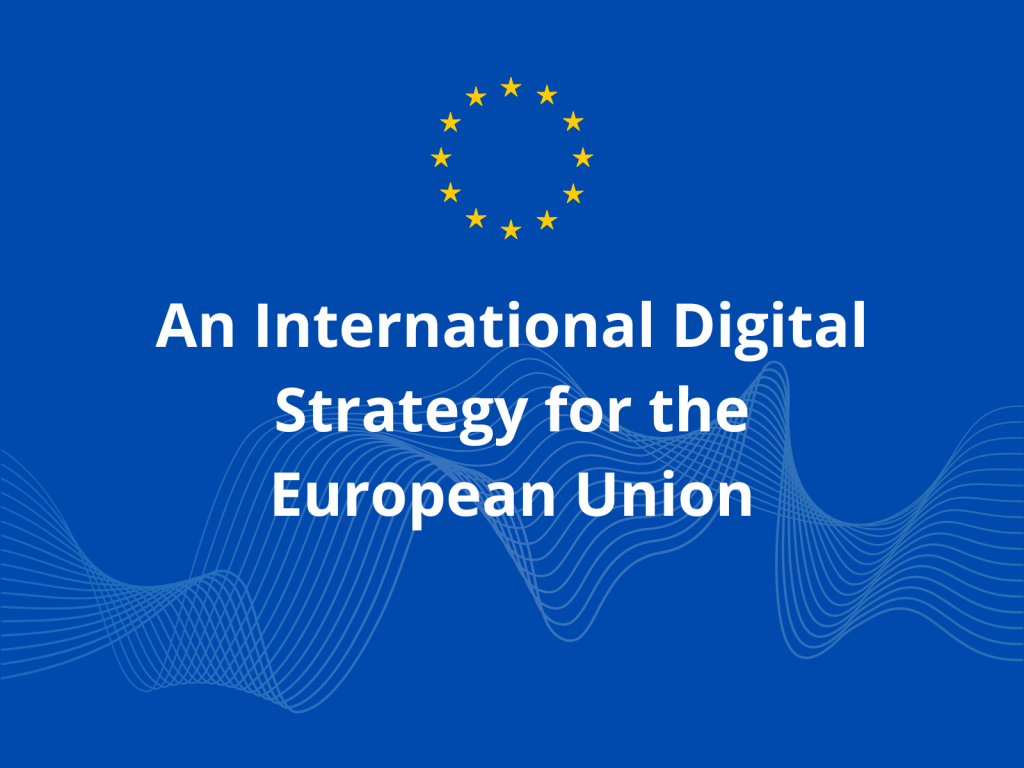
- Category: Library
- 2025-10-13
In June 2025, the European Commission and the High Representative for Foreign Affairs and Security Policy published the Joint Communication An International Digital Strategy for the European Union.
The document sets out the EU’s approach to fostering an open, secure, and human-centric digital transformation worldwide, through reinforced partnerships with countries and regions.
The strategy identifies five priority areas for cooperation with partner countries:
- Secure and trusted digital infrastructure
- Emerging technologies, including Artificial Intelligence (AI), 5G/6G, quantum technologies, and semiconductors
- Cybersecurity
- Digital identity and digital public infrastructure
- Governance of online platforms and digital rights
Within this framework, the Communication highlights the importance of space-based technologies, particularly non-terrestrial networks and satellite connectivity, as key components of the EU’s vision for secure and trusted digital infrastructure.
Space-based technologies as a pillar of digital infrastructure
The Communication explicitly includes non-terrestrial networks and satellite systems as part of the secure and resilient digital infrastructure the EU seeks to promote. This recognition is particularly significant for regions where terrestrial connectivity is limited or absent, making satellite-based solutions essential for bridging the digital divide.
Annex I of the Communication outlines specific planned actions to engage partner countries on secure digital connectivity, leveraging non-terrestrial networks. These efforts align with the EU’s broader Global Gateway investment agenda, which mobilises public and private capital to support strategic digital infrastructure projects worldwide.
The strategy further emphasises the importance of resilience and security, including reducing dependencies on high-risk suppliers. In this context, space-based technologies are positioned as critical enablers of secure, open, and sovereign digital ecosystems.
Dual-use technologies: A considered dimension
While the strategy primarily focuses on civilian applications, it acknowledges the dual-use nature of certain emerging technologies, especially Artificial Intelligence. The Communication notes that “given the dual-use nature of some AI applications, including in the military domain,” the EU will continue to explore their implications within the Common Foreign and Security Policy (CFSP) and Common Security and Defence Policy (CSDP) frameworks.
The EU’s cooperation approach supports partner countries through regulatory alignment, trusted supplier frameworks, and resilience-building in digital value chains. Instruments such as the EU Toolbox on 5G Cybersecurity provide practical tools to mitigate risks associated with strategic technology supply chains, relevant in both civilian and dual-use contexts.
Implementation instruments and cooperation mechanisms
To realise its international digital ambitions, the EU will leverage a combination of policy and financial instruments, including:
- The Global Gateway strategy for infrastructure investment
- Dedicated Digital Partnerships with key partner countries
- Regional Digital Dialogues and programmes focused on legislative alignment, capacity building, and promoting EU-aligned standards in digital policy
Looking ahead
The EU’s International Digital Strategy for 2025 establishes a comprehensive policy framework that recognises the strategic role of non-terrestrial connectivity and space-based systems as vital components of secure and competitive digital infrastructure. It also acknowledges the complexities posed by dual-use technologies, especially AI, within the context of EU security policies.
Future cooperation, particularly through the Global Gateway and Digital Partnerships, is expected to advance these priorities, reinforcing the EU’s commitment to digital sovereignty, resilience, and global leadership.
The EC Communication and its Annex can be accessed here: https://digital-strategy.ec.europa.eu/en/library/joint-communication-international-digital-strategy-eu